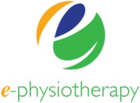The most common joints for dislocations or subluxations are the shoulder, the knee cap (patella) and fingers. Some disolcations are from trauma, usually from contact sports, and can happen to anyone. These usually require the assitance of a physiotherapist or doctor to help self reduce/relocate the joint. Other people who are hyperflexible can sublux (partially dislocate) or disolcate their joints as there isn’t enough ligamentous tension to prevent this. They are usually able to self reduce/relocate their joint and don’t need the help of a physiotherapist or doctor to do this.
In extreme cases, surgery may be required to to help stabilize the joint after traumatic or recurrent joint dislocations. This is most commonly done in the shoulder (glenohumeral) joint.
Physiotherapy helps to strengthen muscles around the unstable joint to help prevent another dislocation and has been shown to be effective in a large number of cases. Strengthening should be tried before considering surgery.
In the lower back, you can get instability and subluxation called a spondylolisthesis. This is where one vertebra slips slighty forwards in relation to the one below. This can be due to a small fracture in the vertebra allowing the forwards slip, usually from doing sports that involve repeated backward arching of the back, but can alos be from running based sports. Spondylolisthesis can also be genetic, running in families. Finally, it can be from degenerative changes in the spine. This can respond well to physiotherapy involving strengthening and improving the coordination of your abdominal and back muscles. In more extreme cases, surgery may be considered, but only after strengthening and activity modification have not worked.
In the shoulder, physiotherapy strengthening focuses first on the rotator cuff muscles as well as the muscles that control the position of the shoulder blade (scapula). Rehabilitation progresses to learning to control the position of your arm (humerus) in the shoulder (glenohumeral) joint when you are doing every day movements and then progresses to more strenuous activites such as sports. Movements are done slowly initially and progressed to fast movements later in rehabilitation.
Manual therapy including myofascial release and acupuncture/dry needling can be helpful in reducing muscle spasm in muscles around the unstable joint. If there is swelling in the joint, electrophysical agents such as ultrasound and interferential can be uses to speed up your progress.

